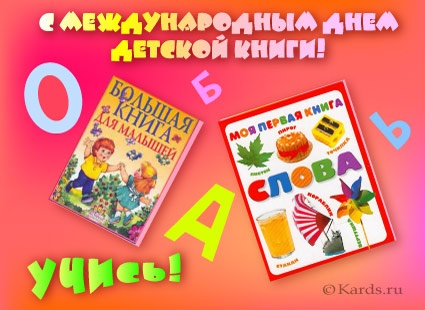April 2nd – International Children’s Book Day
April 2, 2014, 06:00
The first Children’s Book Day occurred in 1967. Children’s Book Day is celebrated on the birthday of one of the most significant children’s storytellers, Hans Christian Andersen, born in 1805. The International Board on Books for the Young (IBBY) sponsors the holiday. Yelle Lepman, a remarkable woman and writer, had advocated strongly for a day to celebrate children’s literature.
Yella Lepman spent nearly all of her wonderful life dedicated to children and children’s literature. She translated and edited many children’s and young adults’ literature. She wrote several children’s books herself, and found the International Youth Library, a professionally curated collection of the best-written children’s works in the world. One of the most successful projects of the International Youth Library are writer exhibitions throughout the world. For example, they sponsored an exhibition dedicated to friendship and tolerance was in held in Moscow in 2004.
Lepman also organized an award named after Hans Christian Andersen for children’s writers. This award is given out every two years on April 2nd. Currently more than 40 writers and illustrators, including Astrid Lindgren, Gianni Rodari, Tove Jansson and James Crews, are winners of the award.
The “International Council” has national offices around the world, and each year a different one becomes the honorary organizer of the holiday. Staffers develop a theme and invite well-known writers from their country to write letters to children throughout the world. This year, Irish writer, editor and translator Siobhan Parkinson has the honor.
IBBY also asks an artist to create a themed poster for the holiday. In 2014, the poster designer is Niamh Sharkey.
Throughout the year, these materials are used to promote reading as a decisive influence on the intellectual and spiritual growth of children and young people.
Children’s literature is a relatively new phenomenon. Until the 17th century, children read almost the same books as their parents. Fairy tales, folk stories, fantasy and mystical stories existed only in the oral tradition. Some of these stories have since been put on paper and have become hugely popular. For example, Aesop’s Fables, legends of Robin Hood, King Arthur or the folk tales retold by the Brothers Grimm or Charles Perrault.
With the emergence and spread of the printing press throughout Europe, coincided with the spread of children’s literature. By the 18th century, the range of books for children was large enough that children could choose books to read based on their own tastes and interests.
The 19th century, rightly called the golden age of literature, also had much to offer children and young people. By this time, there was no doubt that children needed their own books beyond school and religious texts. Moreover, literacy increased, especially among the poorer classes. Perhaps the most important even of the time was the publication of Lewis Carroll’s Alice in Wonderland books, based solely on free flights of imagination and without any educational imperative. Despite this, children did not become independent targets of the publishing industry until the latter half of the 20th century.
Children’s literature is a compendium of interesting, joyful and important things from around the world. Take today’s holiday as an opportunity to read something to your children. Throw in a good book before bedtime, maybe on a favorite from your own childhood, or something new that you may have missed!
По материалам www